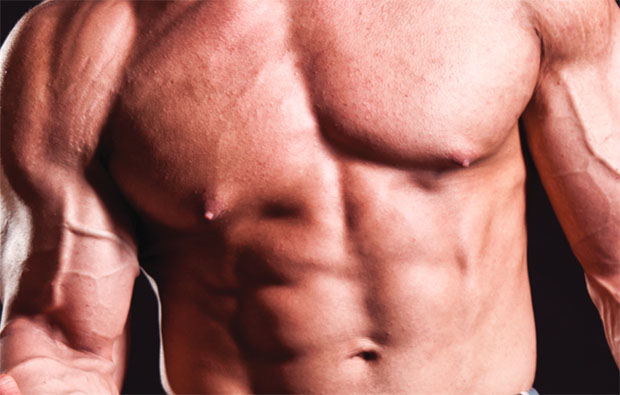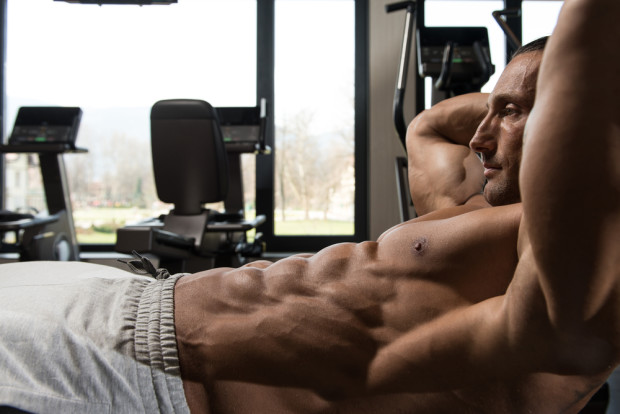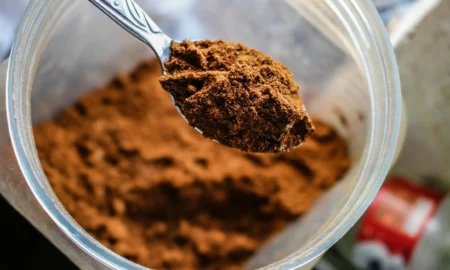


Treatment for male breast development has advanced rapidly. Men are no longer forced to live with a condition that can shatter their self-confidence.
Gynecomastia, enlarged breast tissue in males, can be emotionally devastating. My patients tell me they feel em-barrassed by their “man boobs” and they wear T-shirts in the pool and at the beach. For bodybuilding competitors and fitness models, it can be a huge impediment to their career. It’s visible onstage, in photos, and can be very dis-tracting. In my experience, enlarged breast tissue makes all men extremely self-conscious, even those who never take their shirt off in public.
Gynecomastia is most frequently seen in teenage boys and older men because of hormonal changes. In more than 90 percent of young boys, the condition resolves spontaneously. However, up to 40 percent of adult men are affected by some degree of gynecomastia. In male bodybuilders, this percent-age is often higher.
If you’re worried about gynecomastia, the first thing to do is get a referral to see an endocrinologist (a doctor who spe-cializes in hormones) to rule out medical conditions that can cause it. These include diseases like hepatitis, various can-cers, or thyroid and testosterone imbalances. Street drugs like marijuana and heroin, as well as many prescription drugs, have been associated with gynecomastia. Steroid use can also cause it. Your physician must also rule out the possibility of breast cancer. (As odd as that sounds, it can happen to men.) Obesity can also cause enlarged breasts from the accumulation of fatty tissue. Oftentimes, by re-moving the source of the gynecomastia, the breast tissue regresses. Some doctors also prescribe estrogen blockers like testosterone to shrink the tissue. However, most pa-tients choose to proceed with surgery to create the best aesthetics as possible.
The Surgical OptionSince gynecomastia surgery is performed under general anesthesia, all patients should undergo a complete physical with lab work. Because herbal medications and supple-ments can have ingredients that increase risk of bleeding, these should be stopped for at least two weeks prior to sur-gery. The risk of bleeding is slightly higher in bodybuilders than the general population since there is increased blood flow to their highly developed chest musculature compared to the average population of men. Therefore, prior to un-dergoing surgery, one must understand the post-operative instructions and restrictions, and plan accordingly. A pa-tient will have to wear a compressive garment for several weeks after surgery and also refrain from strenuous activity for about a month afterward in order to prevent complica-tions such as bleeding or fluid collecting under the skin.
Surgery in bodybuilders and fitness athletes is different from other populations. These men are usually not over-weight and tend to have a very small fatty component to their gynecomastia, which is made mostly of breast tissue. They also tend to have better and tight-er skin compared to men who have gynecomastia due to obesity. The key to success is to remove all the breast tissue to keep it from coming back. This must be done in a very precise manner to allow the tissues to taper naturally toward the rest of the chest. Oftentimes, the edges are blended with a fine liposuction cannula to allow for a smooth transition. Almost all patients are able to have all the breast tissue removed from a half-circle incision that sits exactly along the lower edge of the areola. This scar usually heals very well and is barely visible. Patients will usu-ally need to have drains in place for a few days to keep any fluid from collect-ing under the skin.
For younger patients and those with good skin elasticity, this is usually all they need. The skin slowly tightens and forms a nice flat contour. Patients should know that this process of skin tightening takes time; in reality, they may have skin bagging or wrinkling for several months.
n a few cases—usually older pa-tients with poor skin elasticity or when a large volume of breast tissue or fat is removed—the excess skin will be a factor. The most conservative way to approach this situa-tion is to first perform the gynecomastia surgery to remove the volume, and then several months later perform the skin excision. Waiting allows the skin to tighten as much as possible on its own. The skin excision is tailored to the patient’s individual anatomy but can consist of removing a circle around the areola, taking out a vertical section of skin under the nipple, removing an ellipse of skin near the armpit where the skin folds, or extracting a large section of skin and moving the nipple as a free graft. All patients undergo-ing surgery should understand that they will have a significant improvement in their breast appearance, but there can be visible scars, skin depressions, and persistent wrinkling.
Overall, patients are extremely happy with their results. It often improves a man’s quality of life and can help him feel more confident.
Dr. Catherine Begovic is a celebrity double board certified plastic surgeon in Beverly Hills. She has been featured on multiple TV outlets including The Doctors, Fox News, EntertainmentTonight, CBS, and Spike TV. For more info check out: beautybydrcat.com.






















You must be logged in to post a comment Login